 Animals
Animals  Animals
Animals  Weird Stuff
Weird Stuff 10 Weird Things People Used to Do at New Year’s
 Our World
Our World 10 Archaeological Discoveries of 2025 That Refined History
 Weird Stuff
Weird Stuff 10 Fascinating Facts You Might Not Know About Snow
 Miscellaneous
Miscellaneous Top 10 Things Crypto Was Supposed to Change & What Actually Did
 History
History 10 Huge Historical Events That Happened on Christmas Eve
 Music
Music 10 Surprising Origin Stories of Your Favorite Holiday Songs
 History
History 10 Less Than Jolly Events That Occurred on December 25
 Weird Stuff
Weird Stuff 10 Funny Ways That Researchers Overthink Christmas
 Politics
Politics 10 Political Scandals That Sent Crowds Into the Streets
 Animals
Animals 10 Species That Refused to Go Extinct
 Weird Stuff
Weird Stuff 10 Weird Things People Used to Do at New Year’s
 Our World
Our World 10 Archaeological Discoveries of 2025 That Refined History
Who's Behind Listverse?

Jamie Frater
Head Editor
Jamie founded Listverse due to an insatiable desire to share fascinating, obscure, and bizarre facts. He has been a guest speaker on numerous national radio and television stations and is a five time published author.
More About Us Weird Stuff
Weird Stuff 10 Fascinating Facts You Might Not Know About Snow
 Miscellaneous
Miscellaneous Top 10 Things Crypto Was Supposed to Change & What Actually Did
 History
History 10 Huge Historical Events That Happened on Christmas Eve
 Music
Music 10 Surprising Origin Stories of Your Favorite Holiday Songs
 History
History 10 Less Than Jolly Events That Occurred on December 25
 Weird Stuff
Weird Stuff 10 Funny Ways That Researchers Overthink Christmas
 Politics
Politics 10 Political Scandals That Sent Crowds Into the Streets
10 Misconceptions About Famous Historical Wars And Armies
Wars and the armies that fight them are one of the most fascinating subjects to the human race. Conquest has shaped and reshaped the globe many times, and great wars will continue to alter the future course of humanity. However, while humanity loves to study and learn about wars, many of the most accepted facts are highly inaccurate—either due to historical distortion or outright manipulation by past leaders.
As they say, history is usually written by the winners, and the winners will nearly always make sure that things are written in a way that makes them look smarter and more benevolent than they probably were. While many of these lords of conquest were quite sly in their manipulations, some historians today have managed to pierce through the fog of history and find the truth behind many of the myths.
10 The Ending Of The Korean War
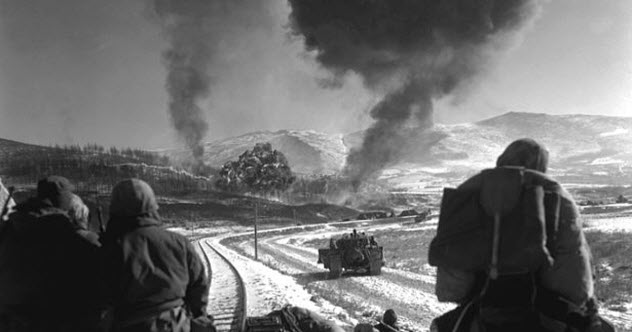
Everyone is aware of the situation going on in Korea right now. The North Koreans are becoming increasingly belligerent and moving further ahead with their ballistic missile testing programs. As they do so, they continue to make more threats about using nuclear weapons against the United States, Japan, or their neighbors in South Korea.
The situation has becoming increasingly complex and fraught with tension. To up the tension and show off their force, North Korea has also paraded captured prisoners in front of the media and sentenced them to decades of hard labor. This includes an American student who foolishly stole a North Korean flag while visiting the country.
Many people are afraid that the North Koreans’ unpredictable behavior is extremely dangerous and could cause them to take action that leads to open war with the United States. However, many people don’t realize that the United States has never stopped being at war with North Korea in the first place and that is part of the reason why tensions have always been so high.
The war between the North and South Koreans was backed by the Chinese and US governments, respectively. It was essentially a proxy war between the two countries, fighting ideologically over the spread of communism or capitalism. Although the war ended, there was no official treaty. It was just a temporary cease-fire, and technically, that is all that it has ever been. China has also remained an official ally of North Korea and even sends escaped defectors and prisoners back to their doom if they’re caught.
Although the conflict with North Korea may escalate, it never really ended in the first place. We have been in a cold war with North Korea—and by extension, a proxy war with China—since shortly after the end of World War II. This is part of the reason that the United States and other countries do not simply enter North Korea and fix the situation.
To do so would risk open war with China, which has always been a staunch ally of North Korea. If anyone were likely to have the political power to upend the North Korean government by force, it would be the Chinese government themselves—if they ever decide that they have lost patience with the North Korean administration.
9 The Rum Rebellion Wasn’t Really About Rum

Many people may have heard about the Rum Rebellion—the only coup in the history of Australia. One day in 1808, hundreds of armed men surrounded the mansion of Governor Bligh, the installed leader of the fledgling colony of Australia. They quickly took over, removing him from power and establishing many rules of their own—as well as undoing many of the governor’s own rules. Before long, the British sent reinforcements and Admiral Macquarie, who quickly stamped out the rebellion and brought a decent state of order to the colony.
Those who know the basic facts often believe that the main reason for the coup was booze. The governor had shut down the rum trade, and this simply could not be tolerated. However, the truth was that booze was only involved indirectly, if at all.
The actual coup was planned and executed by a powerful group in the early days of Australia called the NSW Corps. They owned most of the land—on which they charged exorbitant rents—and made a killing on the rum trade. The governor’s rules had attempted to provide fair land use to all and take away the stranglehold that these men had on supplying rum. He wasn’t taking rum away from anyone; he was just messing with some powerful rich guys’ businesses.
The rebellion wasn’t actually referred to as the “Rum Rebellion” until about half a century later. At the time, the political reasons for the coup were quite obvious to everyone and there was no need to blame it all on people’s love of booze. Eventually, the good Admiral Macquarie permanently broke the power of the NSW Corps and turned Australia into a place that was more of a brand-new country than a place to send prisoners.
8 The Roman Empire Did Not Use Slaves As Soldiers

The Roman Empire was one of the most powerful and planet-spanning empires in known history. So it is understandable that people have greatly romanticized it and also made many aspects of it much larger-than-life.
The great Roman Empire has been the subject of countless movies, books, historical treatises, and speculations of many different sorts, and of them all, one of the greatest fascinations is with the Roman military. Many people think of the Romans as masters of brutal conquest, and so they imagine them using slaves in their combat force.
It is quite common to believe that the Romans would take over a new area and force the population to join their army as slaves to increase the power of the Roman war machine. However, the Roman Senate believed that using slaves as actual soldiers should be reserved for the greatest crisis or issue imaginable. The only exception allowed officers and other high officials to bring attendant slaves to provide for their needs while these officials commanded forces on the battlefield.
The likely reason for this was that slaves were simply not reliable warriors. If they fought only for the right to keep fighting for the Romans and received no compensation, they wouldn’t have the same level of commitment in a battle. In contrast, a well-paid warrior who knew that his deeds could earn glory and a promotion would always go above and beyond.
The Romans did their best to recruit soldiers from conquered peoples to keep their army varied demographically for strategic reasons. But they likely convinced these new soldiers with a pitch more similar to modern-day army recruitment commercials instead of forcing recruitment at sword point.
7 Benedict Arnold Was A Brilliant And Mistreated US General Before The Betrayal
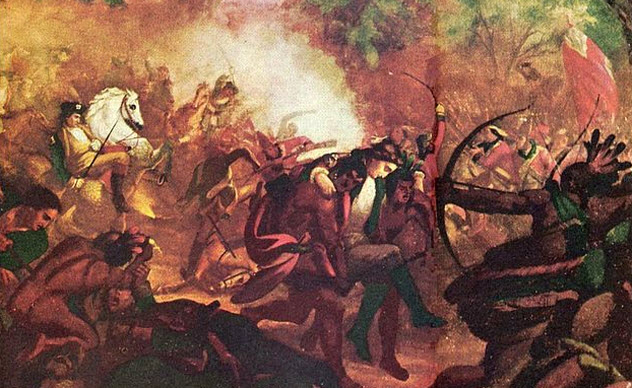
Benedict Arnold is a name that has become synonymous with treachery. He is well-known for giving important military secrets to the British for a large sum of money and betraying the people for whom he once shed his blood. However, it wasn’t as though Benedict Arnold woke up one day and decided that he was going to betray the cause for which he once fought.
Although US historians go to great lengths to avoid mentioning his accomplishments—after all, such a betrayer could not be an American hero—the fact is that Arnold was one of the most brilliant and loyal American commanders before his betrayal. His tactics had been instrumental in the Battle of Ticonderoga, although Ethan Allen ended up with all the credit. Arnold also showed incredible bravery and command skill during many other important battles, but he was initially passed over for promotion in favor of junior officers who had better records on paper.
Although Arnold was eventually promoted, he never forgot this mistreatment and became increasingly resentful of the fledgling United States government. When he tried to clear his name of insider trading charges, the government acquitted him of that wrongdoing and then decided that he owed them money for some losses incurred as a commander in battle. He felt incredibly incensed by this, and it was likely the breaking point that drove him away from his alliance with the revolutionaries.
Arnold betrayed many important secrets to the British and fled the country, knowing that he would not survive long at home after the actions he had taken. While some may feel that he was partly mistreated, others feel vindicated by the knowledge that Arnold also seemed to have trouble getting along with the leadership in his new country of choice.
6 The Children’s Crusade Was Probably Nothing Like People Think
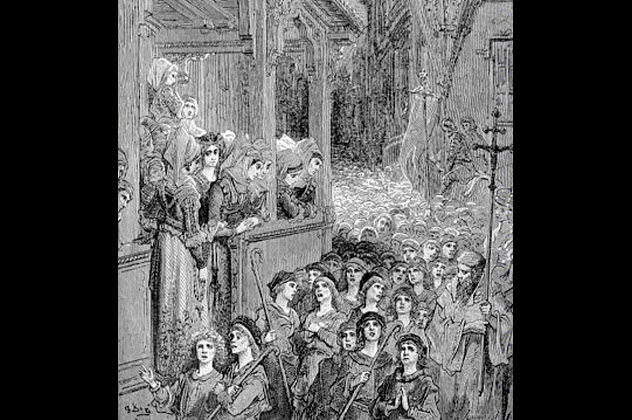
Perhaps the silliest but most common modern myth is that the Children’s Crusade was an actual military attempt by a group of children to form an army and take back the Holy Land. Although there are two different stories from the same time period that detail a supposed Children’s Crusade, neither of them suggests any kind of military aspect whatsoever. On the contrary, it was more of a spiritual journey with a large group of people following someone whom they believed to be a prophet of the Most High.
The first story claims that a child gave bread to a beggar, and the beggar—who just happened to be Jesus—gave the child an important letter to take to the king. Along the way to deliver his letter, the child managed to amass a group of 30,000 other children. But their attempt was ill-fated. Although they managed to make it aboard boats, two of them sank and the other five ended up in Africa where the children were sold into slavery.
The other story started in Germany and had a similar beginning—a young, self-styled prophet amassed a large group of followers and headed on a journey over the Alps. Their adventure ended when he was unable to part the Mediterranean Sea for them to easily cross and they become disillusioned with him.
Although both of these stories have been recounted many times, there is little historical evidence for the veracity of either story. There is even less evidence in terms of details about what these people actually did or were trying to do in the first place. To make matters more muddled, the two stories were originally told without any suggestion at all that children were involved.
It was at least 20 years later that both stories were modified to include that. This calls into question just how large these movements were—if they even existed—and whether there were actually any children involved at all.
5 The Defenders Of The Alamo May Have Actually Surrendered
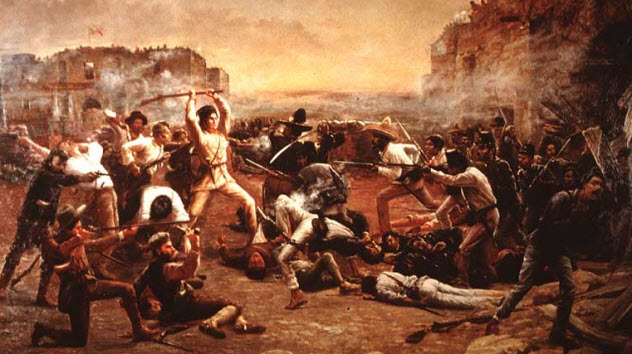
In the early days of the United States, the government tried to take as much territory from Mexico as possible, and Mexico fought back very forcefully against them. The most famous battle of this conflict occurred at the Alamo, a fort held by Davy Crockett and several others who fought bravely against an overwhelming force led by General Santa Anna.
Santa Anna was determined to take back the land that rightfully belonged to Mexico. The stories say that the defenders of the Alamo refused to surrender and fought to the very last man. Then their show of bravery became a rallying cry in the region for Americans assisting in the invasion of the Mexican territories.
However, while it upsets many Davy Crockett fans, there is a lot of reason to believe that the popular story is fanciful nonsense contrived because it made a good story. Multiple accounts by Mexicans—including at least one who was present at the incident—state that seven Americans, including Davy Crockett, surrendered to Santa Anna. However, they were shot because he did not want any survivors after the massacre.
Although many people now think of this as an affront to Crockett’s honor, this version of events was actually accepted and not considered offensive many years ago. It is only recently that those who honor the Alamo decided that the truth somehow besmirches their legacy.
At the time, people saw it differently. They saw a group who had fought to almost the last man and realized that it was hopeless. The men surrendered, hoping for honorable treatment after how they had fought, but they were mercilessly executed. The US government at the time was actually quite happy to use this as propaganda of Santa Anna’s cruelty to spur people to take further action against him.
4 Fully Armored Knights On Horseback Were Quite Rare

Although many people romanticize the medieval era and picture many grand battles with armored knights on horseback holding colorful pennants, the truth is that those kind of awe-inspiring knights were an extremely rare commodity. It wasn’t that the training was arduous, as there were plenty of people who were ready and willing to undergo it, but rather a simple matter of expense.
No matter how strong or stable a kingdom was, trying to keep even one fully equipped knight was a huge drain on the resources of the kingdom’s territories. The horses required extremely expensive training and upkeep, and the knights’ armor was a similar situation. An entire suit of plate armor did not come cheap. Keeping all of it maintained, as well as having a personal servant to help the knight do so, was also very expensive even at minimum cost.
This meant that most battles, even fairly large engagements by richer kingdoms, tended to have a relatively small number of fully plated knights riding on horseback. They were used mainly as the forerunners of tanks—as a means to help push a position or flank the enemy with a strong charge. They couldn’t be thrown away carelessly because they were a huge investment in medieval times.
Of course, the richer kingdoms definitely had a greater number of knights on horseback. But for strategic reasons, these kingdoms still kept their armies extremely varied. In fact, many warlords preferred that their men spend more time learning proper archery—a skill that was prized by many cultures over skill with the blade due to its ability to win battles before the enemy even came in range.
3 Ancient Soldiers Were Using Layered Fabric Armor Long Before The Invention Of Kevlar
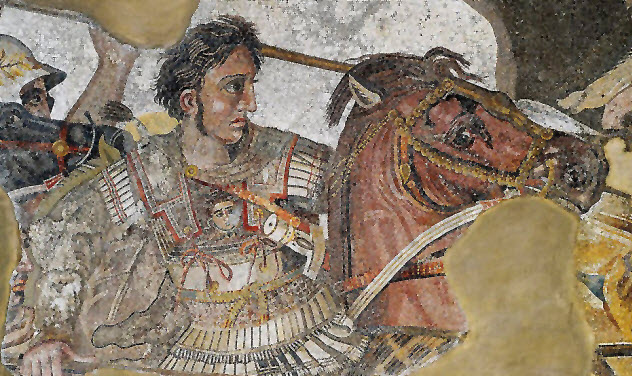
In ancient days, people protected themselves with leather (if it was all that was available) and then progressively harder and more protective varieties of metal. The evolution of armor led all the way to suits of plate armor that covered the entire body, which has now evolved beyond the need for metal.
For protection against the advanced weaponry that military and law enforcement deal with in our modern age, we need special Kevlar armor to keep them safe. This armor basically uses many layers of extremely thin fabric stacked together to arrest the movements of projectiles that would otherwise harm someone.
Although it may sound like the latest in technology, there were many examples of ancient people using something very similar, long before we thought of it today. One of the most notable examples was Alexander the Great and his men, who used laminated cloth armor. Multiple layers were glued together to protect them from arrows, knives, spears, and other dangerous weapons.
To test the effectiveness of this armor, researchers used materials that would have been historically available and made fabric armor as close as possible to historical records. The researchers concluded that this cloth armor could have offered effective protection against arrows—perhaps as good or better at doing so than metal armor. While it may not be advanced enough to stop bullets, it was quite useful for its time and shows that many new ideas are actually just modern refinements of very old concepts.
2 The Invasion Of Normandy Was Much Closer To Failure Than People Realize
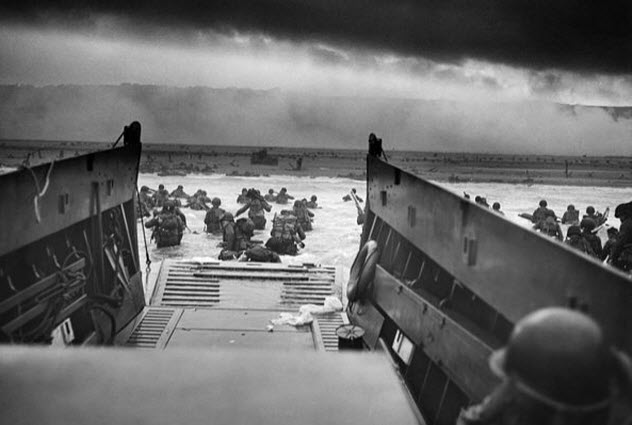
The photos are famous and burned into everyone’s memories. They showed scores of ships in the ocean disgorging troops and massive numbers of men fanning out across the beach, moving toward the hills ahead, and preparing for the fight of their lives. It was perhaps the most important, decisive battle in the entire war, and it actually came much closer to failure than many people realize.
The battle was meticulously planned by the Allied forces, who knew that the Germans had a strong, well-positioned army as well as geographic advantages. They also knew that the Axis powers had a strong spy network. So the Allies had to work carefully to avoid letting the enemy know where they were planning to attack or the invasion was likely to fail. In this case, the Germans did figure out that a major invasion was coming, and they even had a rough idea of the time frame for the attack. But they didn’t know specifically when or where.
The beaches of Normandy were not a strategically advantageous position for the Allies to try to take, but this may have been why the position was ultimately chosen. The Germans were quick to mount a counteroffensive, and the cliffs were already well guarded. In fact, the battle was quite close and might have been lost if the Nazi leadership had elected to send their nearby heavy reinforcements to support their troops. They didn’t because they believed that this attack was just a diversion for the real attack.
Although the Allies were able to take advantage of the Nazis’ mistakes, they also got lucky with weather conditions. Even so, the Allies won the battle by a much closer margin than they were truly comfortable with. As for the consequences of a loss, they would have been disastrous. The British would likely have lost the last of their army’s main strength, and the United States may have gone back to more isolationist policies. This might have left Russia as the only nation standing against the Nazi domination of Europe.
1 The Japanese Soldiers Did Not Believe That Their Emperor Was God
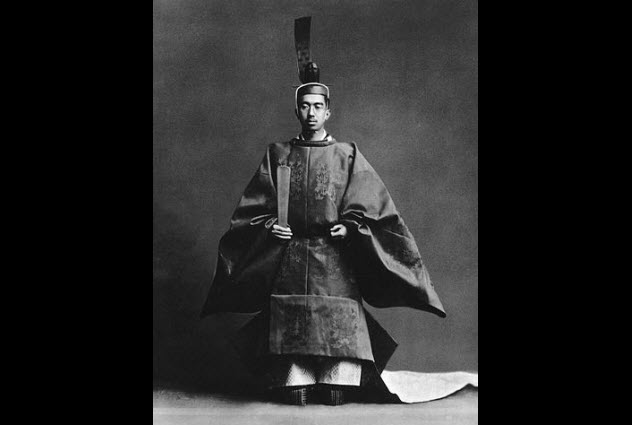
Japan is well-known for their kamikaze bomber pilots who performed suicide attacks in their aircraft, thus showing a fanatical loyalty to their cause. For years, most people believed that this insane devotion happened because the Japanese worshiped their emperor as a god.
Although it is an easy way to explain the situation, the truth is much more complicated. Emperor Hirohito was never considered to be a god in the strictest sense, and he certainly wasn’t considered their highest or one true god by any means.
According to Shinto beliefs, he was considered to be descended from the gods and partly divine, but putting this in terms of Western mythology would make him more like a half-human demigod. This means that he received great respect, but it does not mean that people thought he was god.
At the end of World War II, Emperor Hirohito renounced his divinity after the victorious Allied forces essentially forced him to do so. In recent years, historical revisionists have claimed that Hirohito never truly meant it and that he never stopped being divine. However, despite this revival movement, no one seems to be worshiping him, especially over other gods. He is highly honored, but that is it.
The myth about the Japanese soldiers staging suicide attacks against the Allied forces was likely a combination of many factors. All people have the capability of being very patriotic and going to great lengths to protect their countries, and many Asian people tend to be much more community-minded than Westerners.
Perhaps the Westerners contrived the explanation because it made more sense than an individual sacrificing his life as just a small part of the machine to win the war. Westerners may be willing to go out in a blaze of glory, but they would want it to be a gigantic spectacle that was very important and got them on the news.








